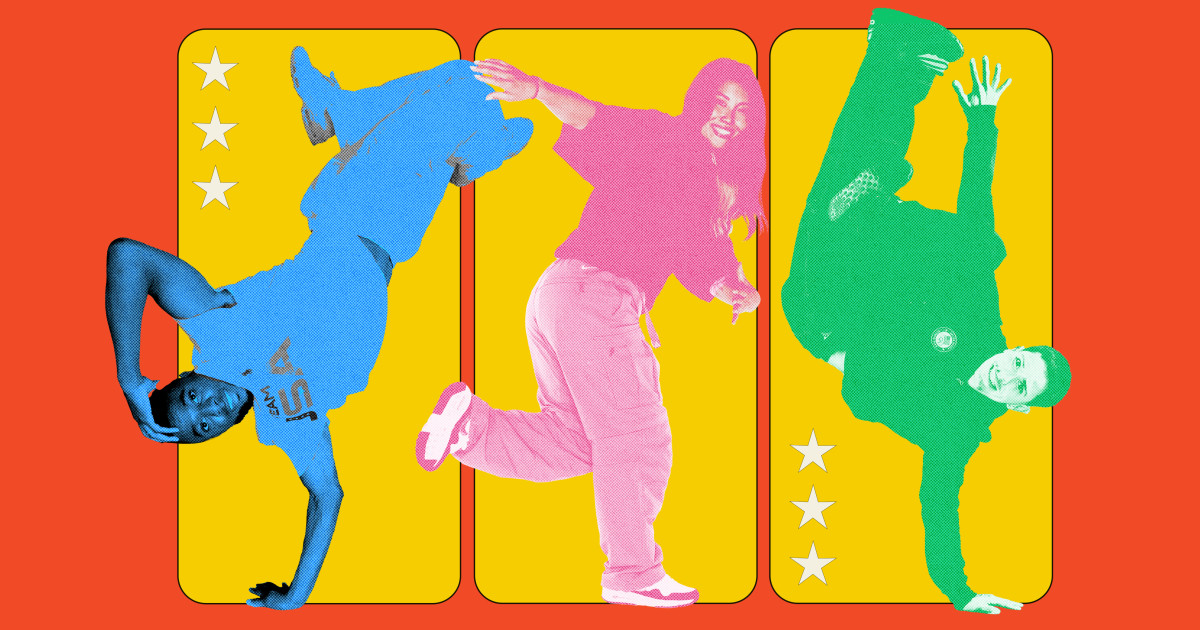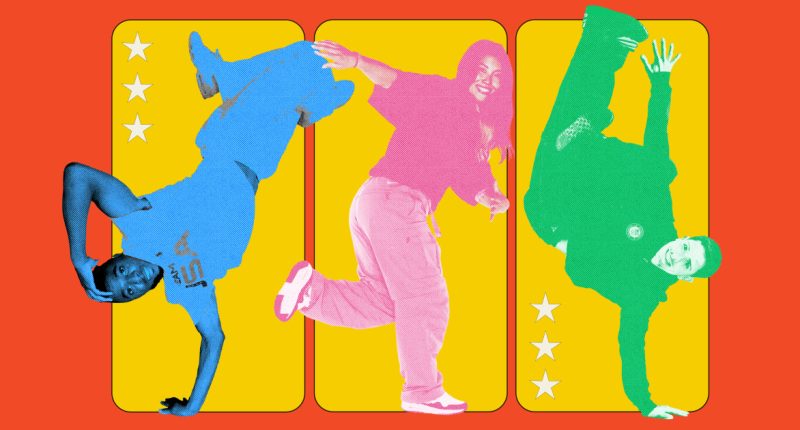
Get ready for plenty of how-did-they-do-that moments when the Paris Games introduce break-dancing as an official Olympic sport.
Bodies will be contorted, gravity will seemingly be defied, and athletes will be showcasing “headspins,” “windmills” and “freeze” moves — and it will all be set to music.
The sport, also known as breaking, made its successful debut at the 2018 Youth Olympics in Buenos Aires, Argentina, where it topped 1 million viewers, according to NBC Olympics, far outpacing audiences for many other sports. The Olympics declared it an “outstanding success,” and now both the organizers and the athletes hope to translate that magic to the biggest stage in sports.
“This is a chance for us to grow and educate people on breaking,” Jeffrey Louis (B-Boy Jeffro), told NBC Olympics. Louis, the fifth-ranked B-boy in the world, is considered a favorite for one of the remaining spots on the U.S. Olympic team.
Breaking joins other newer sports, including three that were added to the Olympic program for the first time at the 2020 Tokyo Games — surfing, skateboarding and sport climbing.
Adding those sports to the official Olympics roster is an attempt by the International Olympic Committee to reach a younger audience, given that “all four are easy to take up and participants form communities that are very active on social media,” according to the Paris Olympics.
The committee, known as the IOC, hopes millions of kids worldwide will be inspired to take up the sports themselves.
“If we get it right, we can create something unstoppable,” Louis said. “We can’t let it pass us up again, because the first time breaking blew up, it fizzled out.”
What is breaking?
The dance-battle sport is “characterised by acrobatic movements, stylised footwork and the key role played by the DJ and the MC (master of ceremonies) during battles,” according to the Paris Olympics.
Some of the moves will have audiences wondering where the halfpipe is as athletes twist and turn like they should have boards under their feet.
The sport’s techniques include top rock (standing footwork) and down rock (moves on the floor), power moves (twists and spins) and the freeze, when breakers freeze in poses while using their heads or hands for support.
How will it work?
The breaking competition in Paris will be divided into two events — one for women and one for men — and they will take place Aug. 9 and 10 at La Concorde Urban Park.
In total, 16 B-boys or 16 B-girls will “go face to face in spectacular solo battles,” according to the Paris Olympics.
The competitors will show off their best moves as they try to keep up with the beat of the DJ’s tracks, improvising to stay alive in the dance battle with a combination of “power moves,” including windmills, the 6-step and freezes, according to the Paris Olympics.
Judges will then vote, paving the way for the first breaking medalists in Olympic history.
Who is on the U.S. Olympic breaking team?
The U.S. will be represented by four breakers — two B-boys and two B-girls — who will compete in solo battles for the gold medal.
So far, two U.S. breakers have qualified: Sunny Choi (B-Girl Sunny) and Victor Montalvo (B-Boy Victor).
From the Bronx to Paris
It has been a decades-long battle to get breaking to the main stage.
The dance style, which has roots in hip-hop culture, originated at block parties in New York City in the 1970s, according to the Paris Olympics.
Louis said the sport originated in a rec room in the Bronx, where “a legendary DJ named Kool Herc debuted a new technique that centered around percussive ‘breaks’ in songs. During these breaks, the crowd would start dancing, which became known as breaking, or breakdancing.”
By the 1980s, it was hitting the mainstream with groups like the Rock Steady Crew, the Dynamic Rockers and the New York City Breakers, who innovated new — and more complex — moves.
It gained wider visibility thanks in part to the 1983 movie “Flashdance.” While the film included only a few short breaking scenes — featuring the Rock Steady Crew — USA Dance said it inspired people around the world to try breaking. But the end of the ’80s, it had fizzled.
Breakers invited fellow dancers out of early retirement to jump-start the scene once again, according to USA Dance. International Battle of the Year, the first large-scale, formally judged breaking event, began in the ’90s, which helped with the sport’s revival and ushered in a new era of interest. Other international competitions also began in the decade, some of which remain active today.
International resurgence
Since then, “breaking has evolved into a global cultural art form with many elements of sport,” according to USA Dance.
The national organization says a number of breaking schools have opened across the U.S. in the last decade, providing spaces for a new, young generation of breakers to learn and hone the craft.
The World DanceSport Federation now governs the sport internationally and is recognized by the IOC as such.
Whitney Carter, director of internally managed sports at the U.S. Olympic and Paralympic Committee, helped form Breaking for Gold USA, a group dedicated to getting breakers in the country ready for the world’s biggest games, NBC Olympics reported.
“Now, the USA is a front-runner at the Olympics,” Tyquan Hodac, USA Dance’s breaking communications director, told NBC Olympics. “We’re the powerhouse. Every other country is looking up to us.”
Source: | This article originally belongs to Nbcnews.com









